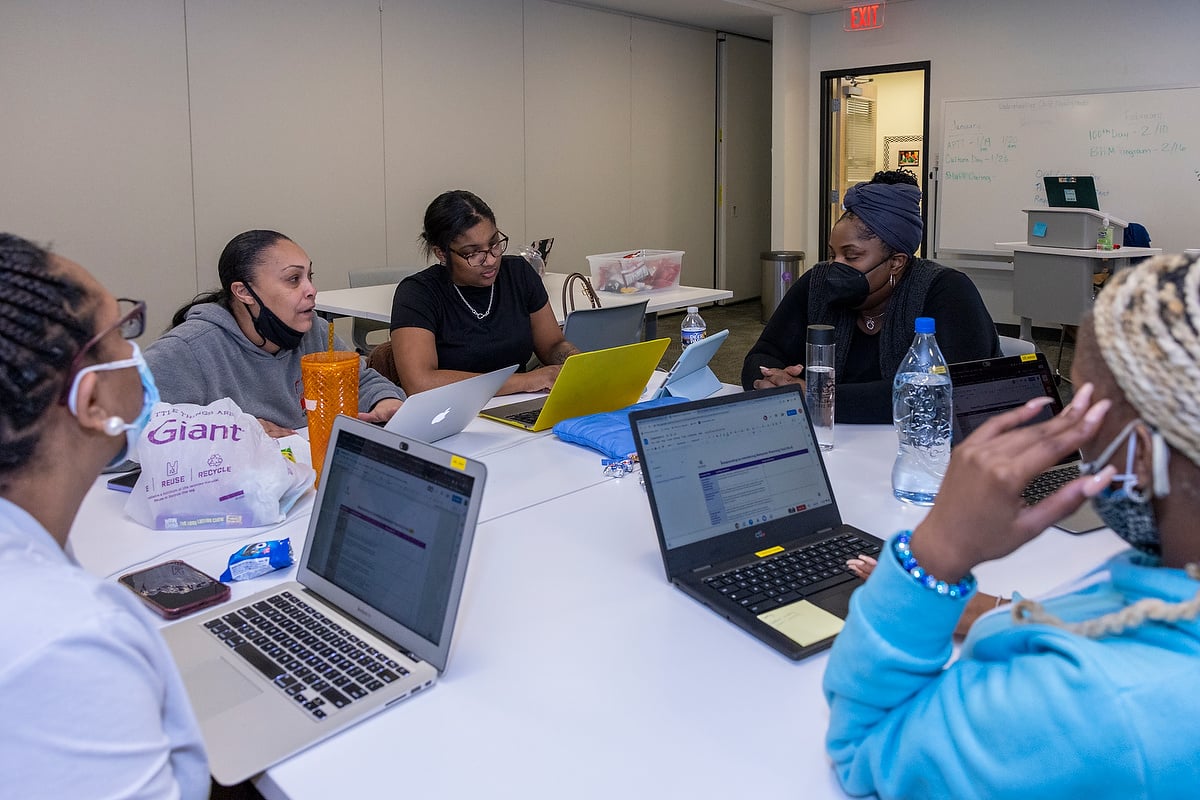Maximizing Student Success: The Pivotal Role of Collaborative Planning in Inclusive Education
Our Work • 6 min read • May 31, 2024 6:14:58 PM • Written by: Sarah Sandelius

FREE DOWNLOADABLE TOOL
Sample Co-Planning Agenda
Scroll to the bottom of this post to download a copy of ABC's template co-planning agenda. This tool can help guide robust lesson planning conversations in a way that is driven by data and centers the most diverse learners.
Collaborative Planning is Key to Fostering Inclusive Education
Collaboration is a key ingredient in creating authentically inclusive classrooms and schools. However, research shows that, right now, collaboration about student needs is not being maximized. In ABC’s survey, 80% of educators identified enhancing collaboration as a pivotal method for improving special education, but only 10% of schools actually have formal collaborative structures. This stark disparity presents a significant opportunity for leaders to improve special education by focusing on building more structures for collaboration and supporting educators in developing their skills in working together to plan for lessons.
Collaborative planning, done well, ensures diverse learning needs are considered and woven into instructional planning across all grade levels. This can be done irrespective of whether the class will be taught by one or more teachers. The goal of collaborative planning is to maximize the different areas of educators’ expertise and knowledge to proactively embed inclusive practices and accommodations into lesson plans - will will effectively improve classroom instruction to best meet the needs of all learners, especially those with special needs or diverse learning requirements.

The Dynamics of Educational Collaboration
Collaboration in education can and should look different across settings, but generally falls into two categories:
Formal Collaboration:
Structured and scheduled, formal collaboration helps to develop inclusive instructional strategies and promotes consistency in implementation across subjects and grade levels. Key aspects that make collaborative planning successful include:
- Regularly scheduled meetings
- Specific agendas/protocols
- Diverse team membership across roles
- Focus on aligning curriculum to meet a wide range of student needs
- Allocation of roles, responsibilities, and resources
- Follow-up and implementation tracking
Informal Collaboration:
In contrast, informal collaboration emerges spontaneously, often driven by immediate needs. These more flexible interactions allow for immediate problem-solving and help build a supportive community among staff. They are crucial for quick responses to new challenges and boosting morale and relationships within the educational team.
Successful education leaders recognize the importance of both formal and informal collaboration. While formal planning is essential for strategic alignment and resource management, informal interactions encourage ongoing dialogue and adaptability to students' evolving needs. Cultivating a culture that supports open communication and provides spaces for both collaborative types is key.

Benefits of Collaborative Curriculum Planning
One type of formal collaborative planning that is especially powerful is when educators come together to unpack standards, plan unit progression, and/or design individual lessons. While it can be challenging to find time for all educators to regularly plan together, engaging in this type of intellectual preparation can help in the following ways:
-
Consistency Across Classrooms
Unified planning ensures all students in a grade level or cohort benefit from a predictable learning environment with clear systems and shared expectations. Additionally, collaborative planning can help ensure aligned pacing across shared content areas which assists providers who push in to support across multiple classrooms. Coherence is helpful for all students and can be especially important for those with disabilities who may struggle without that structure. -
Professional Development and Peer Learning:
Regular collaborative sessions allow teachers to share expertise and foster a culture of continuous improvement and innovation. While the special educator can help build others’ skills in understanding student needs and differentiating to foster access and engagement, general educators bring content-area expertise to the table to ensure lessons are rigorous and help move growth and learning.
Implementing Collaborative Planning in Schools
To bridge the gap between the recognized need and the actual practice of collaborative planning, schools can implement more consistent collaborative planning by taking the following steps:
- First, identify what type of planning would most benefit from increased collaboration. For example, you may want to start by working on collaboratively engaging in unit unpacking or looking at a set of daily lessons in need of differentiation.
- Second, create integrated planning teams that include special education teachers as core members working alongside general education teachers for each grade level. This ensures the curriculum is proactively designed to be accessible and inclusive from the start.
- Third, dedicate regular time slots within the whole school schedule specifically for collaborative planning. This may be weekly or even monthly depending on what else is happening in your building, but it is important to build this opportunity into the schedule in an ongoing way.
- Fourth, train your staff on the purpose, goals, tools, and competencies needed to plan effectively for all learners. This could mean spending time at a facility meeting orienting people to the agenda or facilitating several planning sessions at the beginning of the year to build staff capacity. Regularly revisiting the implementation through feedback cycles and troubleshooting will help make your planning even more meaningful and sustainable.
Template Agenda for Collaborative Planning Session
Irrespective of what component of teaching is being planned collaboratively, each session should have a shared agenda, with each meeting having clear objectives, designated pre-work, discussion of data, and opportunities to discuss roles and responsibilities for next steps. Below is a framework for a 45-minute collaborative lesson-planning meeting.
- Pre-Work: Review student data and better understand where students are toward achieving mastery of a given standard.
- Set the Stage (5 minutes): Review unit plans and prior lesson plans to identify the target standard and/or lesson objective.
- Understand Needs (10 minutes): Jointly review which students are proficient and where gaps in knowledge still exist.
- Plan Instruction (20 minutes): Formulate an actionable plan for ensuring all students move toward mastery and that accommodations are used to remove barriers to accessing grade-level content when needed.
- Solidify Roles (10 minutes): Determine who will be responsible for each component of the lesson and data collection.
A tool to guide these conversations can be found here.
 After a successful collaborative lesson-planning session, educators will be more prepared to deliver the differentiated lesson, collect and review assessment data, and start the planning process all over again.
After a successful collaborative lesson-planning session, educators will be more prepared to deliver the differentiated lesson, collect and review assessment data, and start the planning process all over again.
Conclusion
For school administrators and leaders interested in deepening authentic inclusion in their settings, adopting collaborative planning is essential, not merely a strategic choice. This approach ensures that educational practices are equitable and sustainable, paving the way for success for all students.
Ready to Make an Impact For Your Most Diverse Learners?
Sarah Sandelius
Our Latest
Related Articles

January 12, 2021 | Culture of Inclusion
5 Steps to Building More Collaborative, Equitable, and Inclusive Classrooms
Learn about an innovative approach to foster collaboration among educators and enhance inclusive cla...

March 25, 2021 | Culture of Inclusion
Why Targeted Collaboration Is The Missing Link for Special Education Improvement
Prioritize equitable and inclusive classrooms, even in remote and hybrid settings, with Targeted Col...

August 13, 2024 | Administrators
An Administrator's Essential Guide for Establishing a Culture of Inclusion
Learn how school leaders can foster inclusive education from day one. Practical strategies for admin...
